Sony Carl Zeiss Vario Sonnar 16-35 mm f/2.8 T* SSM
8. Vignetting
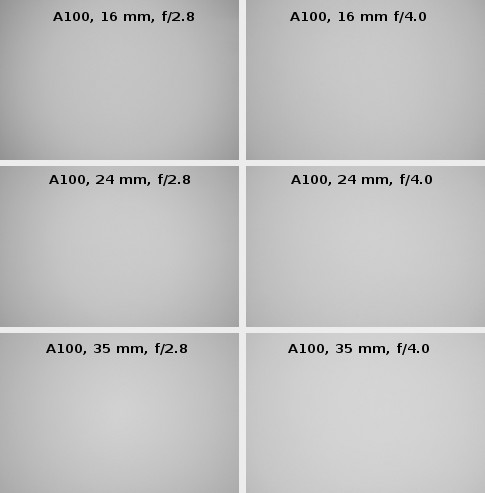
In the middle of the focal lengths range the vignetting is lower but not by a lot – at maximum aperture it is 20% (-0.66 EV). On stopping down by one stop it decreases to the level of 14% and on stopping down by two – it decreases further to 11%.
Please Support UsIf you enjoy our reviews and articles, and you want us to continue our work please, support our website by donating through PayPal. The funds are going to be used for paying our editorial team, renting servers, and equipping our testing studio; only that way we will be able to continue providing you interesting content for free. |
- - - - - - - - - - - - - - - - - - - - - - - - - - - - - - - - - - - - - - - - - - - - - - - -
At 35 mm and by f/2.8 the corner brightness loss is 18% (-0.58 EV) and it becomes unnoticeable (11%) by f/4.0.
Now it will hurt…as we mentioned in the chapter concerning distortion, the transition to full frame isn’t always painless and this truth can be proven especially when it comes to vignetting The most difficult combination for the tested lens, that of the maximum aperture and the shortest focal length, gives us the frame corner illumination loss of as much as 65% (- 3.0 EV!!!) Yes, you see the number correctly, it is not a typo - the frame corners are by three exposition values darker than its centre. What’s more important, closing down the aperture doesn’t help us a lot toget rid of the vignetting. By f/4.0 it amounts to 56%, by f/5.6 – as much as 52%, by f/8.0 it reaches 48% and by f/11 and f/16 it is 42% and 38% respectively.
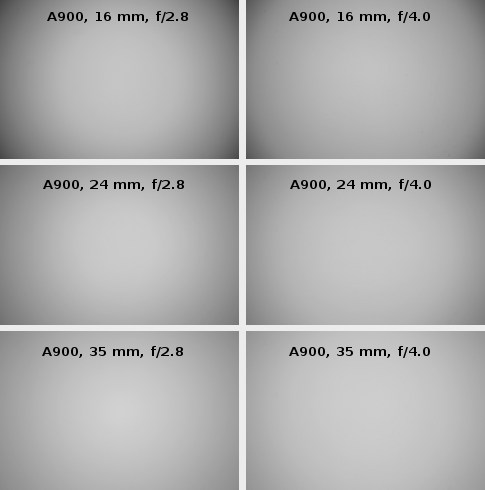
It’s worth understanding the scale of the vignetting problems when we use full frame. The Tokina 11-16 mm at 11 mm gives us similar to the Zeiss wide angle of view and similar f/2.8 aperture but its vignetting is just 36%. The result is better than that of the Zeiss by f/16 ….No comment.
When we proceed to the middle of the focal lengths range the problem remains serious. At the maximum aperture the corner brightness loss is 44% (-1.67 EV). By f/4.0 it decreases to the level of 38% and by f/5.6 – to 34%. Any further decrease is very slow as its pace is about 1-2% for each aperture stop.
Even the maximum focal length is not totally free from the light fall-off. By f/2.8 the problem still exists as the vignetting reaches the value of 34% and by f/4.0 it amounts to 27%. On stopping down to f/5.6 the vignetting decreases to 22% but even further stopping down doesn’t change its level in a measurable way. It holds on to the value of 20-22% within the margin of error.
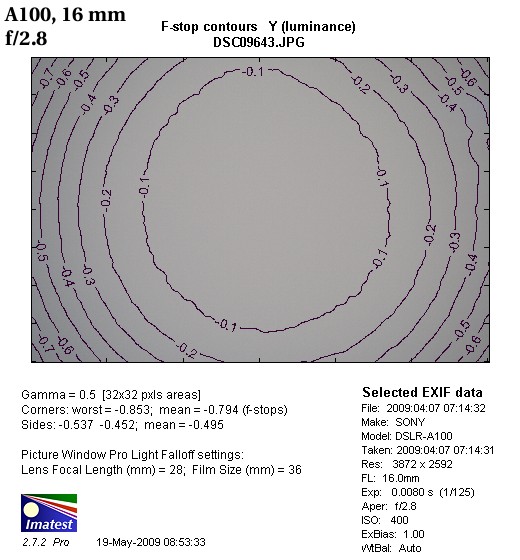 |
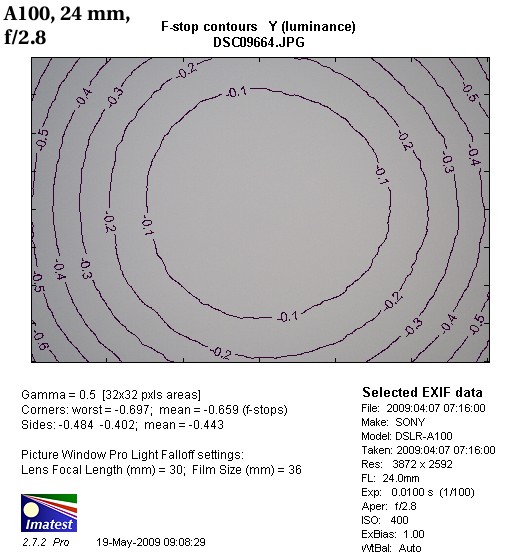 |
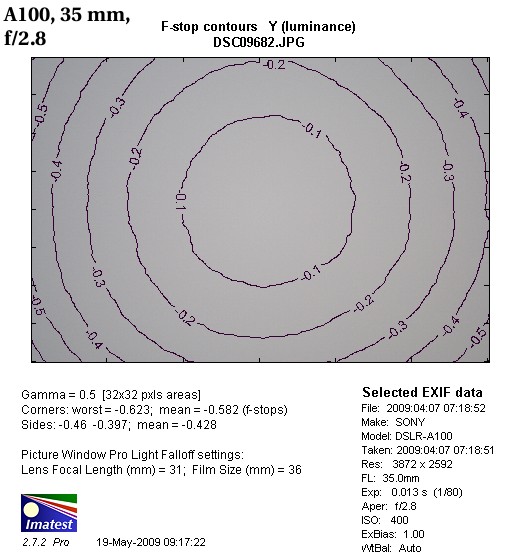 |
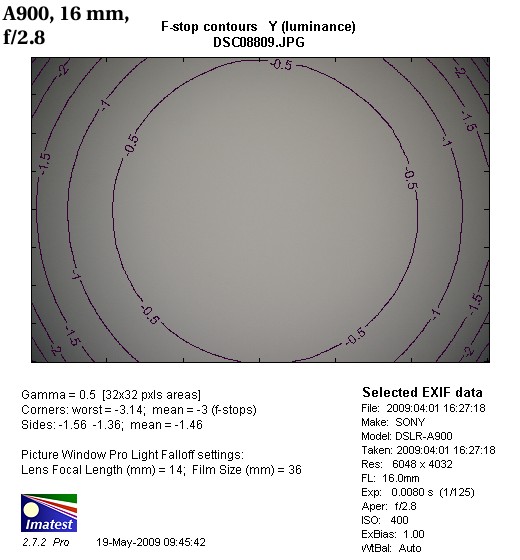 |
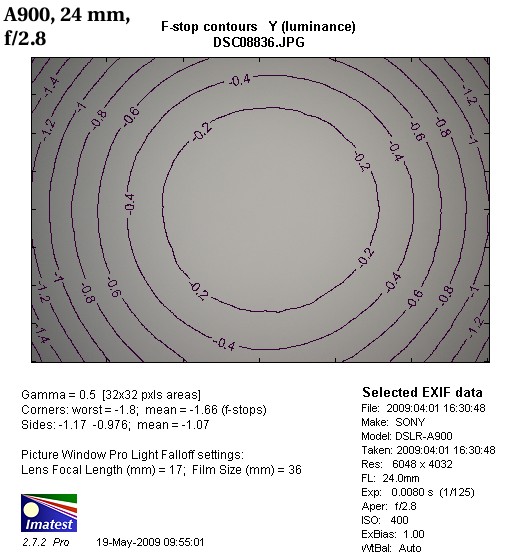 |
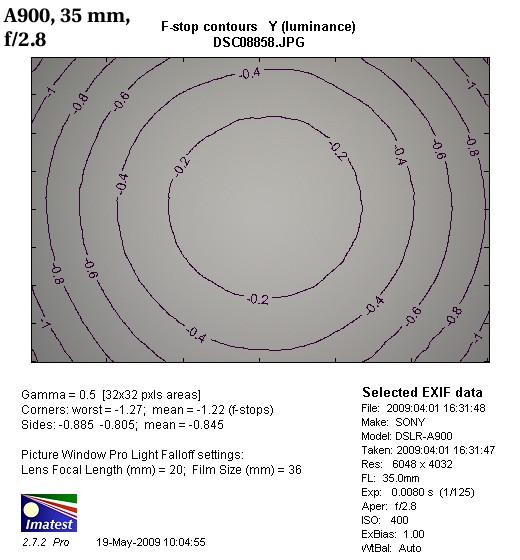 |






